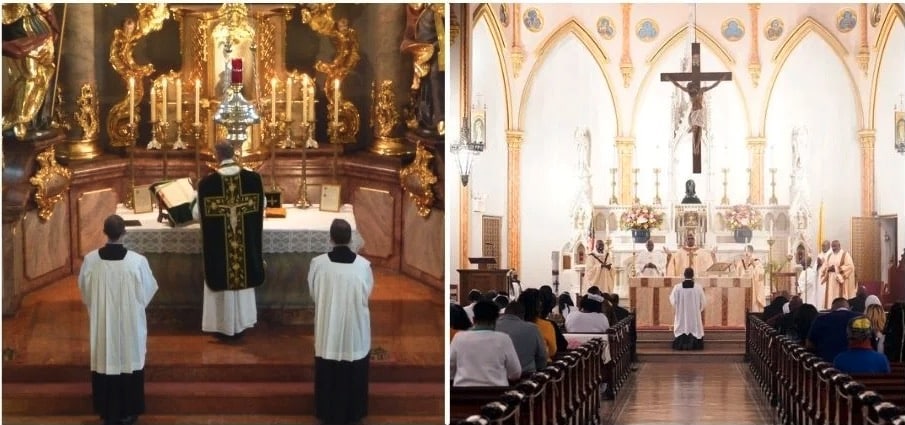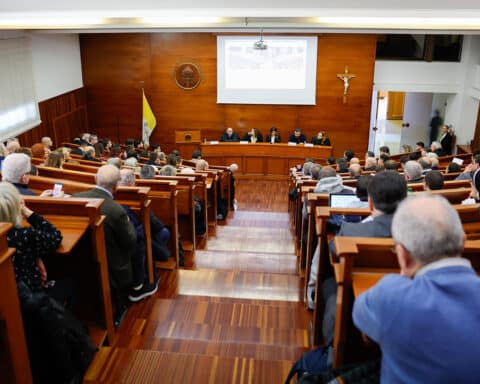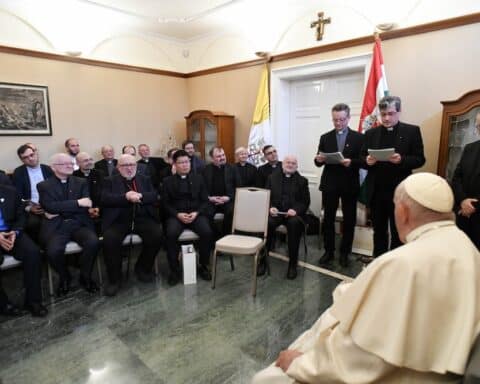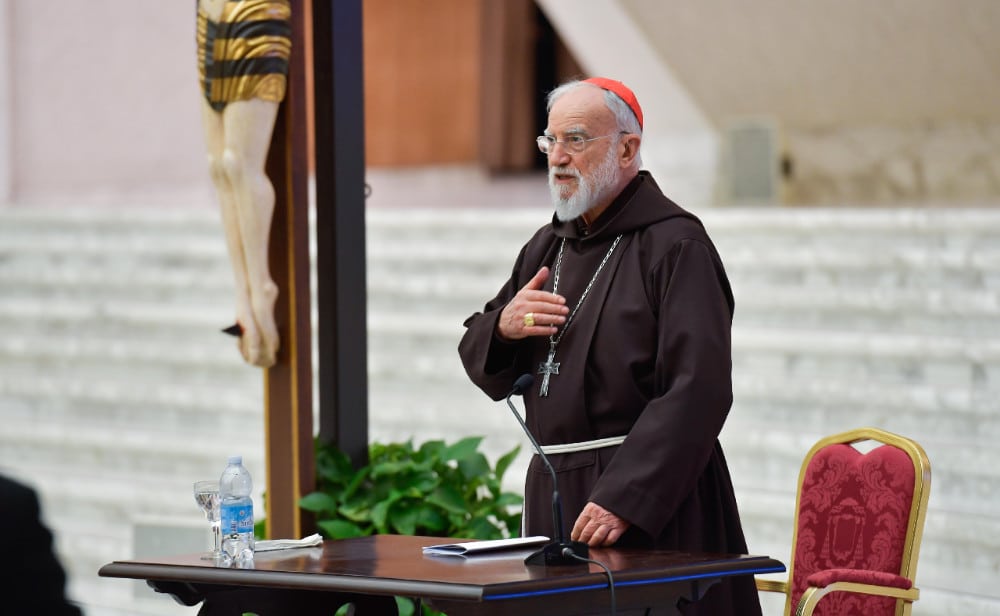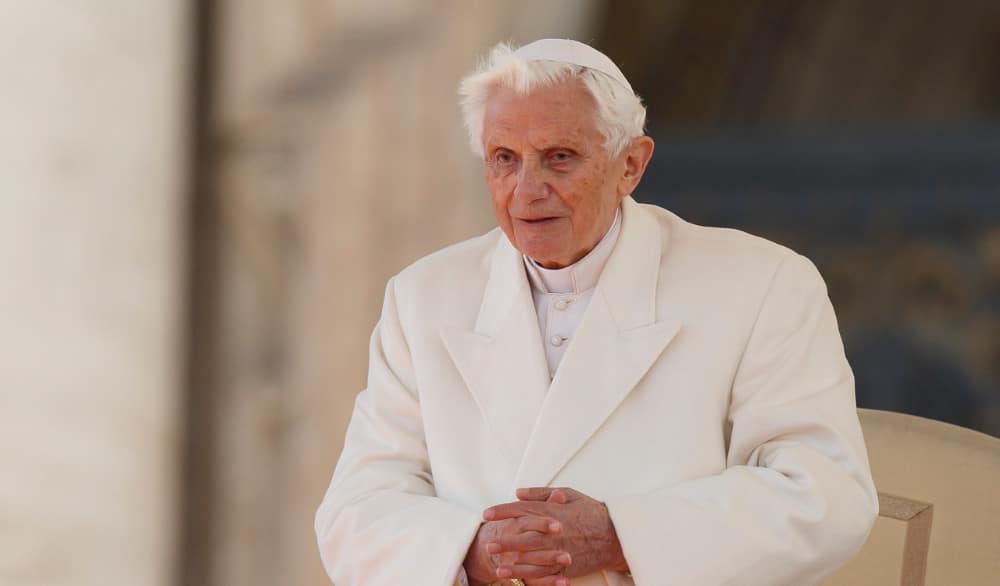This is the fifth in a series of articles exploring the gift and promise of Vatican II’s liturgical reforms.
Thus far, this series has been preparing us to assess liturgical reforms precipitated by the Second Vatican Council. Are they authentic? Is revision needed of said reforms? What would such revision look like?
I want to begin with one of these reforms — namely, the direction the priest faces while addressing God in prayer.
Before the Second Vatican, the posture of the priest during collect prayers and the Eucharistic prayer was ad orientem, or toward the East. To the outside observer, the priest had his back to the people during such prayers, which we should remember, were often prayed sotto voce (“in a soft voice”) in the Roman rite. Altars tended to be located toward the rear of the sanctuary. Even if the priest wanted to offer the Eucharist facing the people, it would have been impossible using most altars.
The reforms of the Mass after Vatican II made a significant change relative to this posture. It was desirable that the Eucharistic liturgy be celebrated versus populum, or toward the people. Part of this change was historical. Some evidence suggested that the Eucharistic liturgy in St. Peter’s in Rome was celebrated in this manner. The people turned with the priest toward the East.
Such evidence was not the exclusive source of the change. Rather, there was a pastoral desire to encourage participation in the Eucharistic rites. It was assumed that versus populum worship better enabled such active participation.
Arguments for ‘ad orientem’
Over the last 30 years, the direction of liturgical prayer has become central to the liturgical wars that continue to rage in the Church.
Proponents of ad orientem worship — including then-Cardinal Joseph Ratzinger — tend to see versus populum worship as both historically and theologically problematic. The argument is that versus populum worship is a novelty introduced into the post-conciliar rites, and that through this posture, the priest becomes the leader of a talk show rather than one who prays. Versus populum worship also eliminates the transcendent nature of this prayer, creating a closed circle of believers — a community of faith that looks inward rather than those who turn together toward the coming Lord.
The extreme version of this position — not taken by Ratzinger himself — argues that this change is the source of secularization in society. As soon as this change was made, all source of liturgical transcendence was lost. The Eucharist was no longer understood as a sacrifice but a common meal together. Liturgical change facilitated secularization. If we want to return to a flourishing ecclesial life, we must change the posture of the priest.
Arguments for ‘versus populum’
One can understand these reactions, of course, when one hears the common defense of versus populum worship. It is normal to hear people proclaim that Jesus faced the disciples at the Last Supper, and therefore in the Eucharistic rites, the priest should face the people. Truthfully, we have little idea of Jesus’ posture at the Last Supper, and the closest we come is in the Gospels where we hear that Jesus was reclined at table.
Further, the language of meal has been taken up in the defense of versus populum worship. Would you turn your back to someone at a meal? If the answer is no, then when the Church celebrates the most important of all meals, then why would the priest turn his back on the people?
Such arguments are both liturgically and theologically mistaken. Versus populum worship is not an imitation of the meal ministry of Jesus. The Eucharist is not a reenactment of the Last Supper or any other meal in which Jesus partook. It is the sacrifice of Christ, the presence of Our Lord dwelling among us, and the sacrament that leads believers into deeper communion with one another. The Church is remembering the sacrifice of Our Lord, not reenacting it. And if the Church was reenacting it, we would likely be all lying around on couches. We would also eventually abandon Jesus in his suffering in a garden.
Both are needed
So, what are we to do? I believe both postures, in fact, are needed in the Church. Both are theologically, liturgically and spiritually fruitful. Next month’s column will make that argument. For now, I want to acknowledge two important facts — namely, the change in liturgical posture is likely not the cause of secularization. And, yes, sometimes, versus populum worship has resulted in an immanentizing of the liturgical act.
Many liturgical traditionalists regularly fall into a form of sociological determinism. They argue that secularization in the Church is caused by liturgical change. When the priest faced the people, that’s when everything fell apart in the Church and society. This is a naive position. There are many reasons that secularization has unfolded. The posture of the priest may be the root cause, but it would require extraordinary scholarly care to make such an argument. How do we know, for example, that the real cause of secularization isn’t change in family dynamics? Institutional distrust? Maybe, more people would have left the Church if the posture of the priest stayed the same?
Yet, implementation of a changed posture has sometimes resulted in immanence in worship. The Eucharist is not an ordinary meal. The priest, facing the people, may feel the impetus to be an improviser. He may sound more like a terrible actor than someone offering the sacrifice of Christ and the Church. This must be corrected.
Focus on the altar
In point of fact, we must understand what the Church herself teaches relative to this posture. The General Instruction for the Roman Missal (a theological and rubrical introduction to the Mass) states, “The altar should be separate from the wall, in such a way that it is possible to walk around it easily and that Mass can be celebrated at it facing the people, which is desirable wherever possible. Moreover, the altar should occupy a place where it is truly the center toward which the attention of the whole congregation of the faithful naturally turns” (No. 299).
Notice that nothing is said about facing the people or turning toward the liturgical East. Rather, the direction toward which we face is the altar. It is the altar, a sign of Christ’s very presence dwelling among us, toward which we turn our attention.
The altar, in this sense, is not a piece of furniture. It is not a dining room table. Rather, the altar is a sacramental sign of Our Lord Jesus Christ. For this reason, the altar is consecrated with oil, as if the altar is a person. The priest reverences the altar with a kiss. We incense the altar. Our entire attention, therefore, is turned toward the Eucharistic table where the sacrifice of Our Lord is offered by the entire People of God.
The priest and the baptized faithful alike.
Yet, the Church also doesn’t say that ad orientem worship is never allowed. It states that it is desirable. But there may be reasons to take up this posture anew.
The task of the next column is to suggest ways of moving beyond this liturgical impasse. How can both postures find space in the Church? The answer, as we’ll see next month, is by more deeply understanding the altar as a sacramental sign.
Timothy P. O’Malley, Ph.D., is the director of education at the McGrath Institute for Church Life at the University of Notre Dame.

